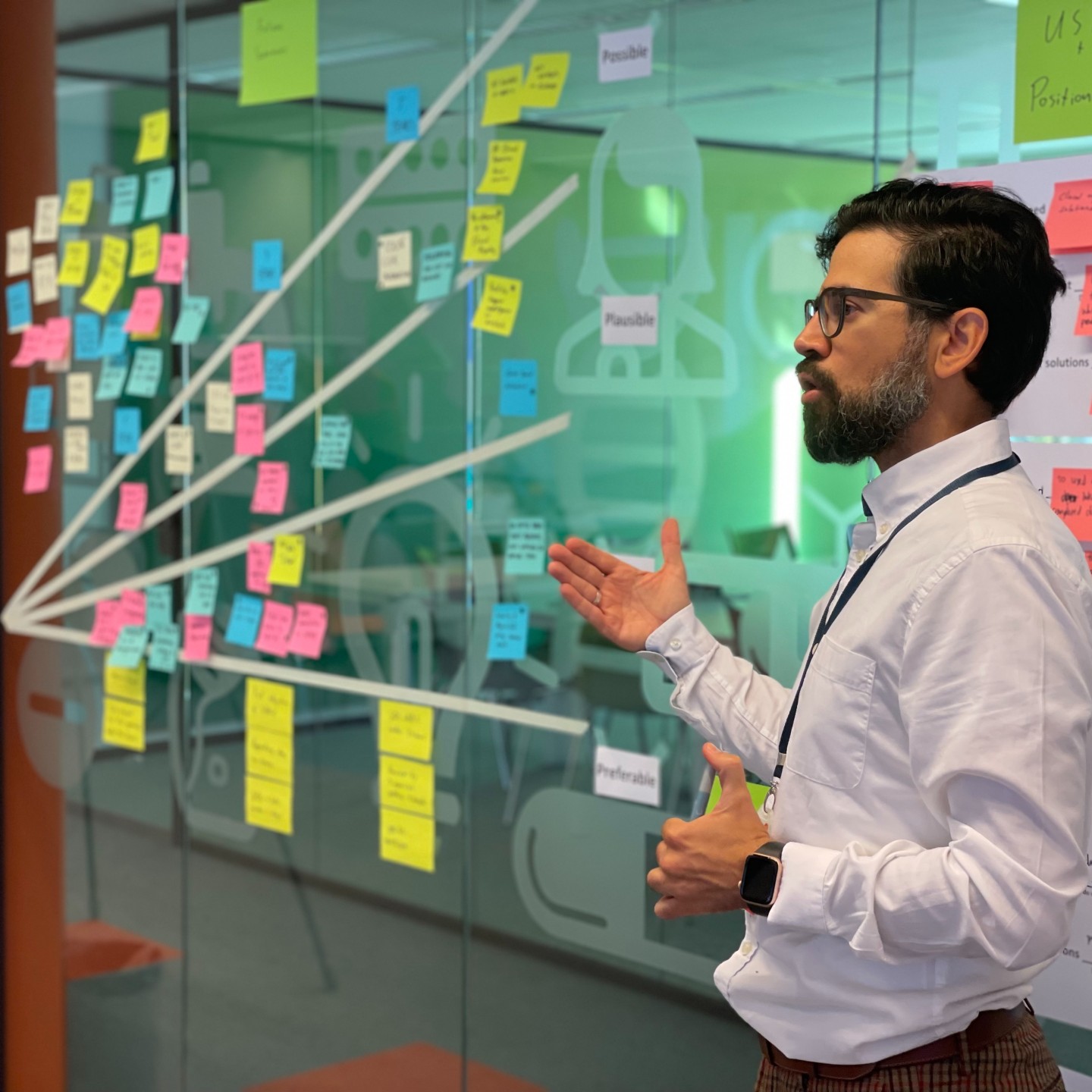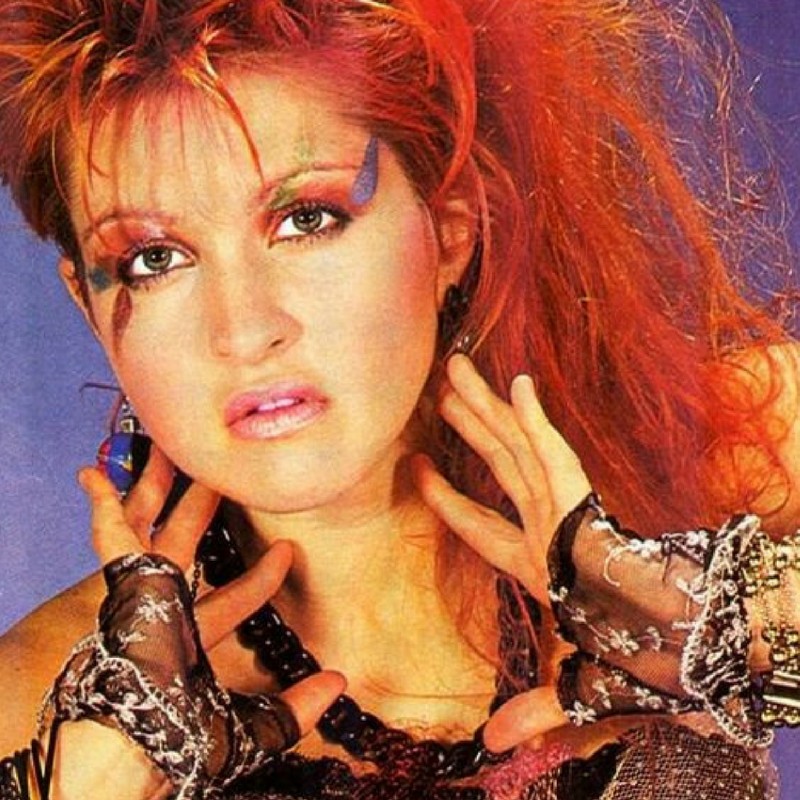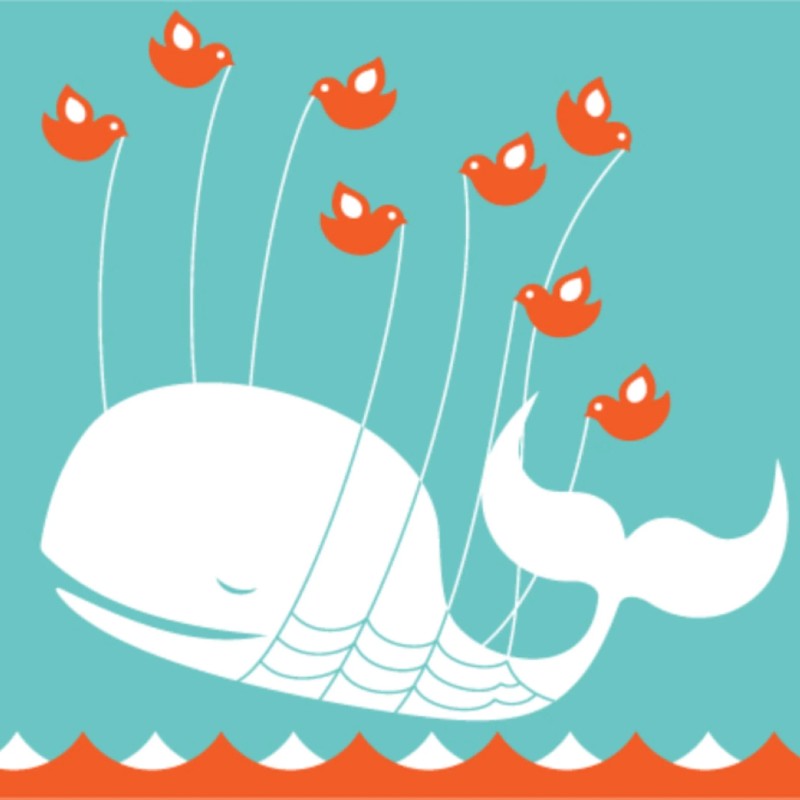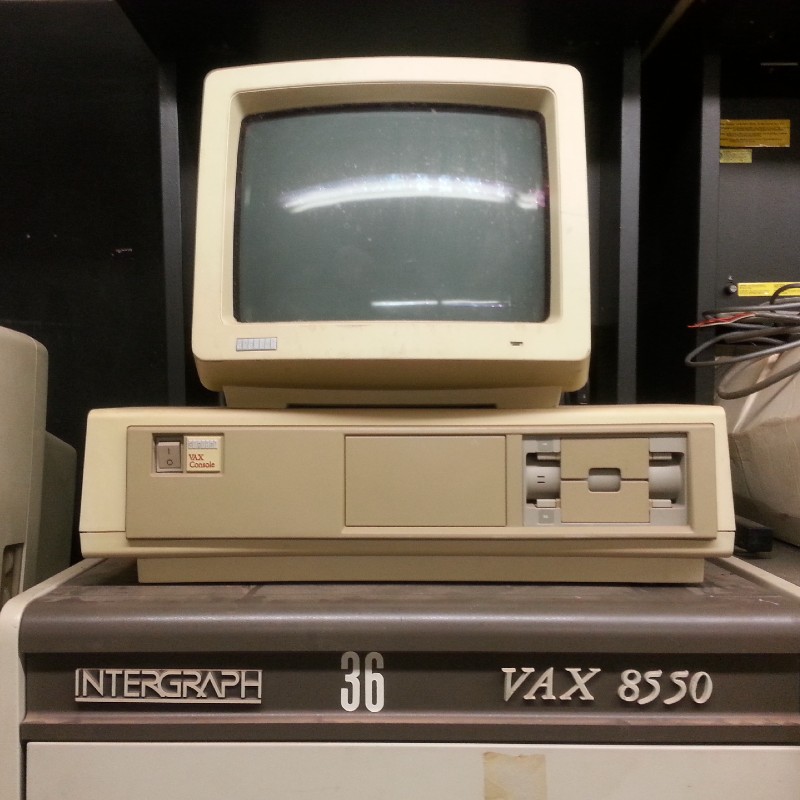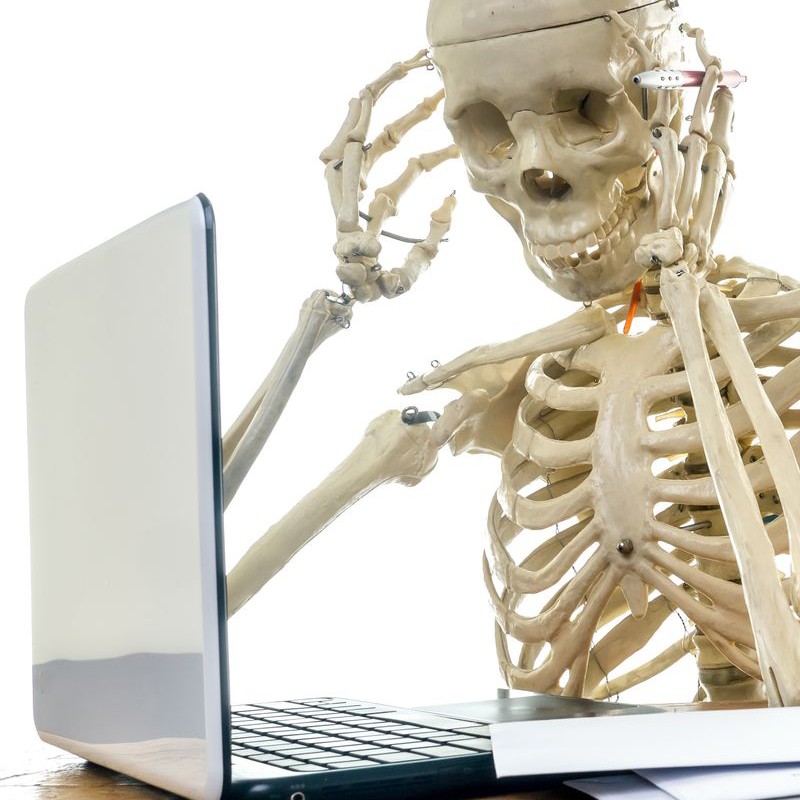Introducing our Futures Cone workshop template.
Best Practice
By Peter Horvath, Strategy & Service Design Lead at Whitespace
Date: 28 February 2023
A must-have for forward-thinking leadership teams
The Futures Cone is a useful foresight tool that could lend itself nicely to co-creative workshops. However, its original visual representations do not fit this type of usage. So we created an alternative version of the Futures Cone on Miro (and soon on Mural), to enable you to facilitate these types of workshops, or to ask us to do it for you. 🙂
This article presumes the reader is familiar with some fundamentals of futures thinking.
Context
The Futures Cone (aka cone of plausibility, cone of possibility) is a futures thinking and foresight tool, demonstrating that the future is not linear. Accordingly, the future cannot be illustrated with a simple right-pointing arrow, as is often done.
Instead, there is a host of ever-expanding possible scenarios as we head further and further into the future. The main categories are probable, plausible, and possible futures, in order of declining likelihood. These have been visualized as 3-dimensional cones embedded in each other. The work was created iteratively in 1990 by Charles Taylor, 1994 by Hancock and Bezold, and in the 2000s by Joseph Voros.

Challenges
While very impactful, these visuals do not lend themselves easily to co-creative workshops. This is especially problematic, as the cone itself should be used in group settings. Its top 5 shortcomings are:
- At a high level, the cone visual is simple, but it actually packs a lot of complexity. So workshop participants need time to take it all in and make sense of it. For workshop and futures novices, it is daunting — exactly the opposite effect of what you want to achieve at a workshop.
- In a workshop, similar ideas should be captured in a distinct area, to facilitate oversight. But due to the symmetrical nature of the cone, there are actually 2 areas for each type of future (at the top and the bottom of the cone), which is made even more complex with the 3-dimensional representation. Because of this, the placement of ideas and oversight becomes challenging.
- While ‘preferred futures’ are shown, their counterpoint, ‘undesired futures’, are not part of the cone. These are equally important when using foresight for strategy. Both preferred and undesired future scenarios may change by audience type — and visualizing them as an area of the cone makes comparing different audiences’ opinions difficult.
- Futures scenarios are not easy to wrap your head around. Some type of preparation is needed — but the cone jumps straight into creating and placing scenarios without any warm-up.
- And on the other end, imagining scenarios is just the beginning — but discussing and defining action is not part of the cone.
Solution
When conducting a futures workshop for a Top 10 Pharma client, our experts at Whitespace wanted to use the cone. But we also knew that we could not use it in its current form. And so our 3-step Futures Cone Workshop Template was born. See below, and read on to see what we changed, and why.
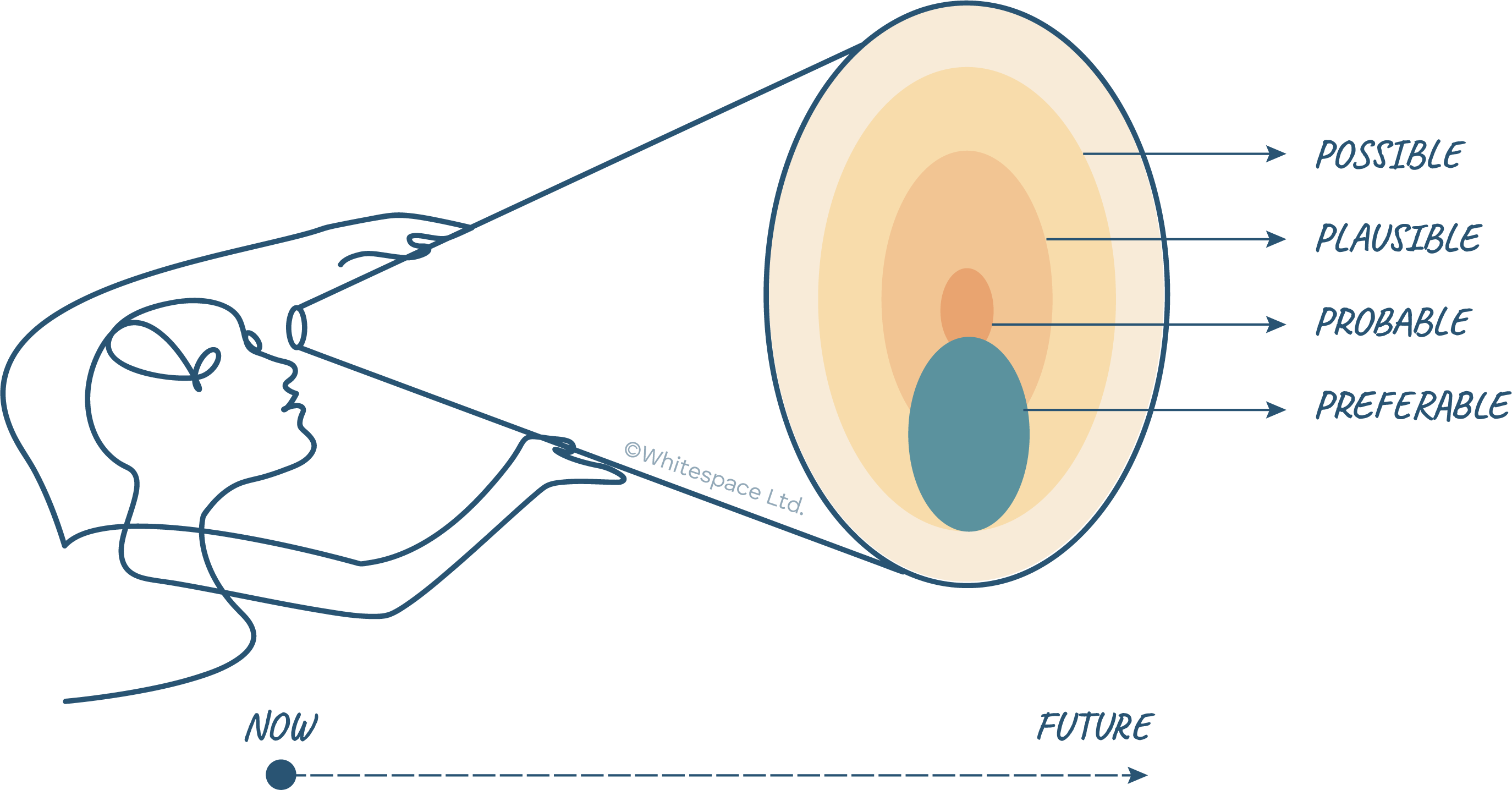

1. Adding a preparation
Future scenarios should build on signals and drivers. So we added an initial step, which asks workshop participants to list signals and drivers in an individual and a group exercise respectively. This is a sort of brain dump, which acts as a warm-up, and helps focus on the topic, important trends, and innovative evidence, without needing too much creativity. This resolves problem #4 from the above list.
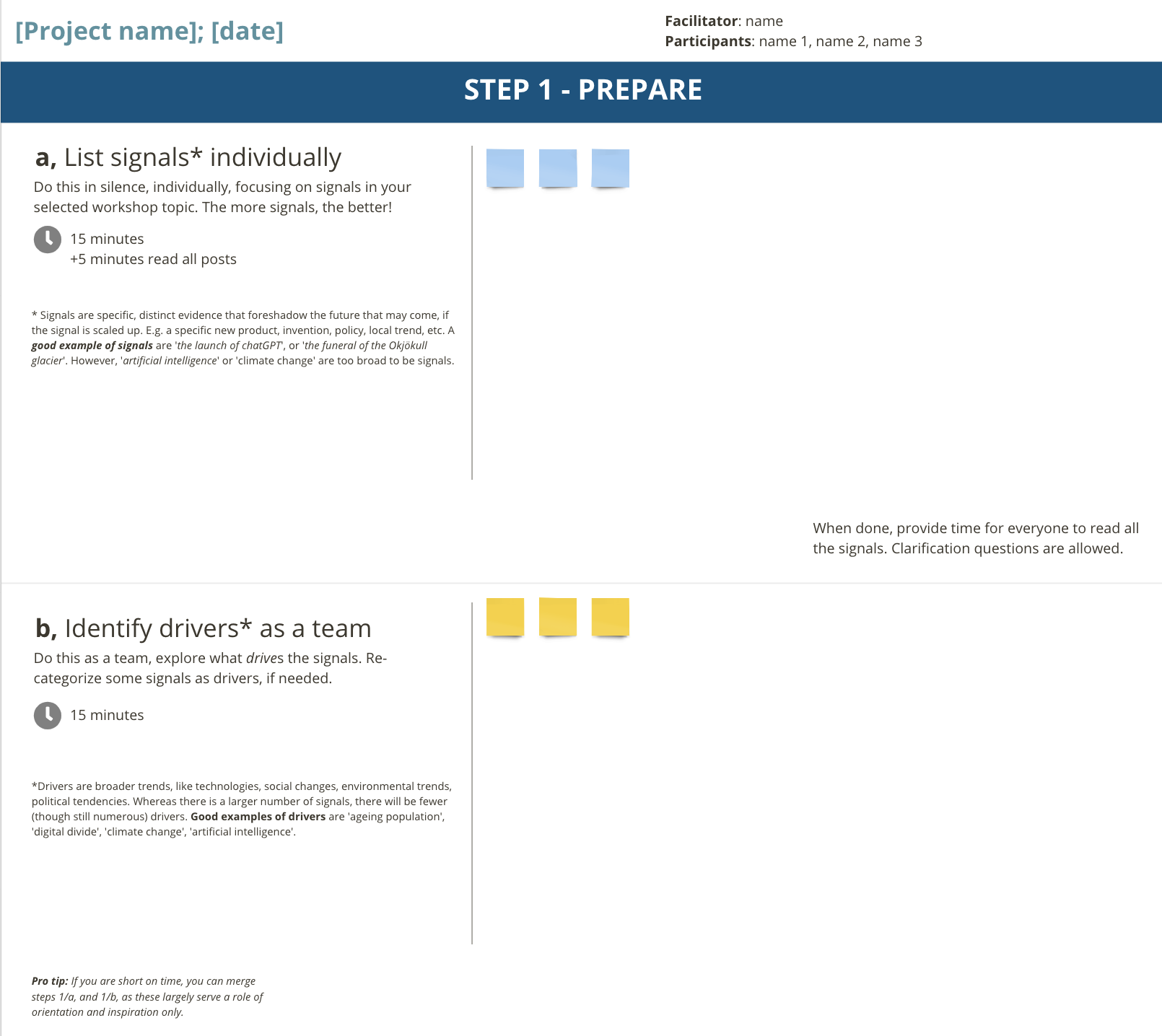
2. Simplifying the cone
We took several steps to make the cone simpler:
- We only kept the 3 core future types (probable, plausible, possible), and laid them out in single, distinct, triangular shapes, instead of the original 3D, overlaying visual. This helps with problems #1 and #2 listed above. You might argue this removes some of the granularity of the tool — this is true, but a workshop is often a first step, and/or meant for futures novices. So simplicity is a virtue here.
- Identifying preferred and undesired scenarios is now a separate step. We introduced voting to identify the appropriate scenarios. We end the voting by re-coloring the winners in green (preferred scenarios) and red (undesired scenarios) respectively. If multiple audiences are working on the same cone in parallel breakouts, their results can be compared very easily by seeing where the green and red scenarios are placed. This addresses problem #3.
- The 3 futures types received color coding in shades of grey, darkening with the decrease of likelihood. This follows Voros’s metaphor of thinking of the cone as car headlights. What is directly in front of us is most visible. Things further out are less visible but are no less important. This helps further in resolving problem #2.
- We even added complete darkness around the cone, and added a pro tip, that some ‘preposterous’ scenarios could even be added outside the cone. These include scenarios that some people need convincing to believe (e.g. worldwide shut-down due to a pandemic…?).
- The pixel distance between the 3 timescales is decreasing, but as the cones widen out the further right you go, the area available to host scenarios actually remains pretty constant.
- We chose to highlight 3, 5, and 10-year timeframes. A decade is generally recommended as an optimal end for foresight activities. Nonetheless, we allow a bit of space for a 10+ years timeframe, just in case someone gets inspired.
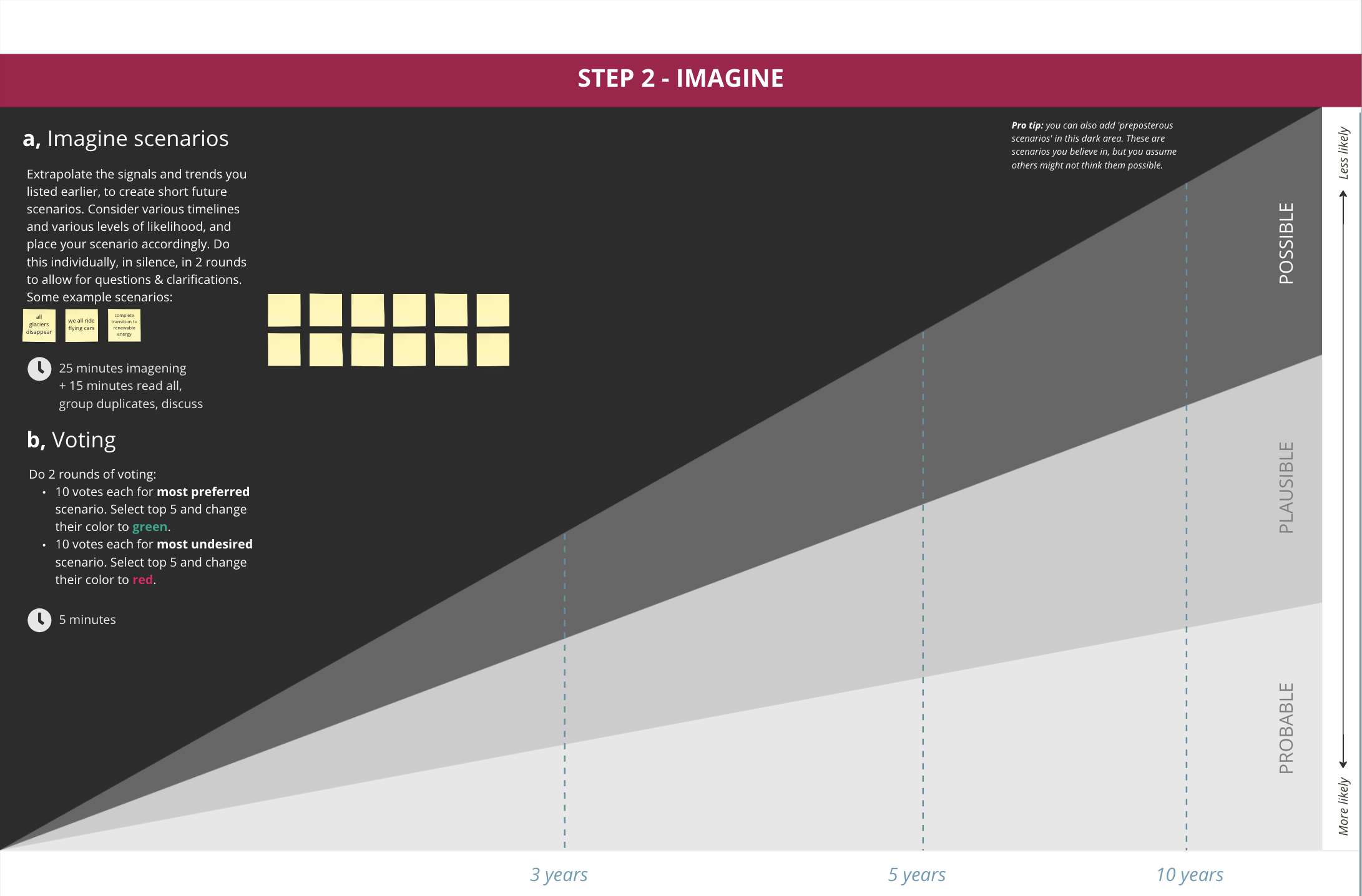
3. Taking action
Once scenarios are added to the futures cone, and the most preferred and most undesired are selected, the cone ends — but work only begins. The whole goal of futures thinking and foresight is to take action to create the futures we prefer and avoid the undesired ones.

The whole goal of futures thinking and foresight is to take action to create the futures we prefer and avoid the undesired ones.

Without turning the workshop into a project management exercise, we added a simple conclusion to the end of the workshop.
- Copy the 5 most-voted ‘preferred’ and the 5 most-voted ‘undesired’ scenarios to the ‘step 3 - take action’ board.
- Add at least a few next steps and an owner. While actions could be more robust, we want to stress again that a workshop is often a first step, and/or meant for futures novices. So simplicity is a virtue.

The future is in your hands
We are not the first to visualize the Futures Cone in a simplified way, but remixing existing elements into such a workshop structure did seem like a gap, and we were happy to fill it for the community.
Please take our templates on Miro or Figjam for a test drive, or a live engagement, and let us know your feedback — we love to iterate! And if you are intimidated to do the workshop yourself, let our experts at Whitespace know — we’d be happy to help!
